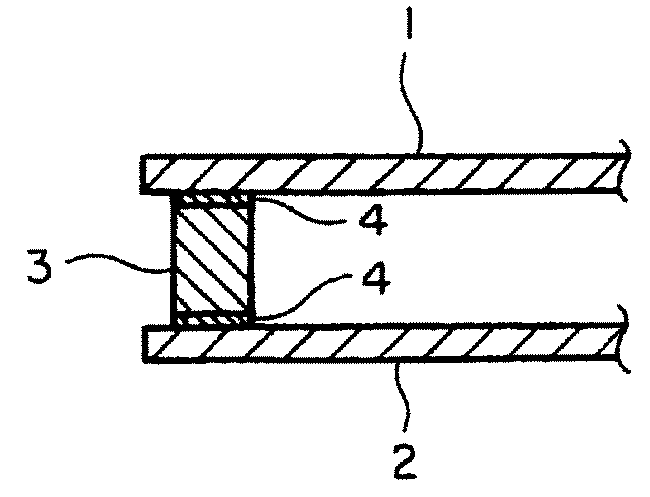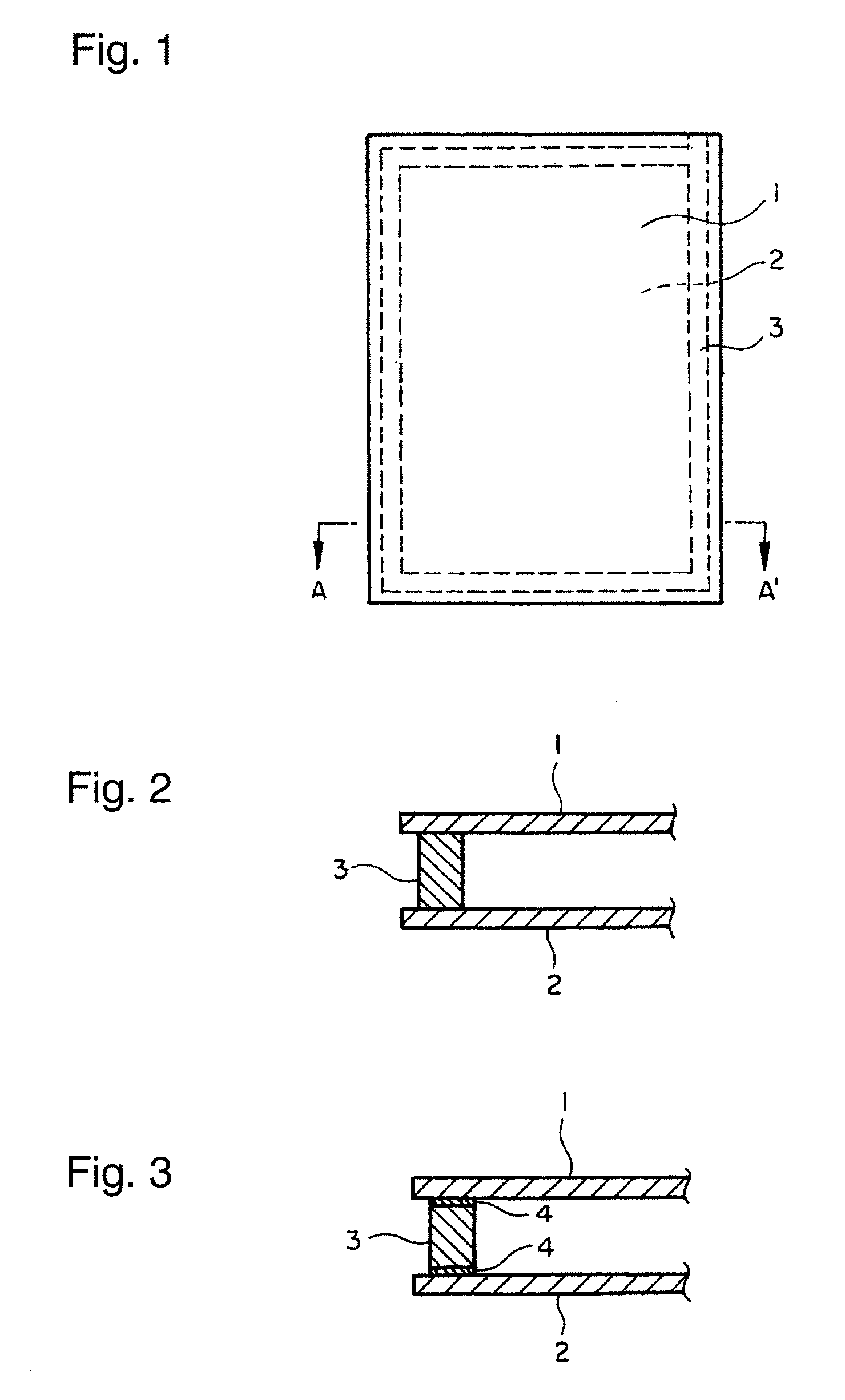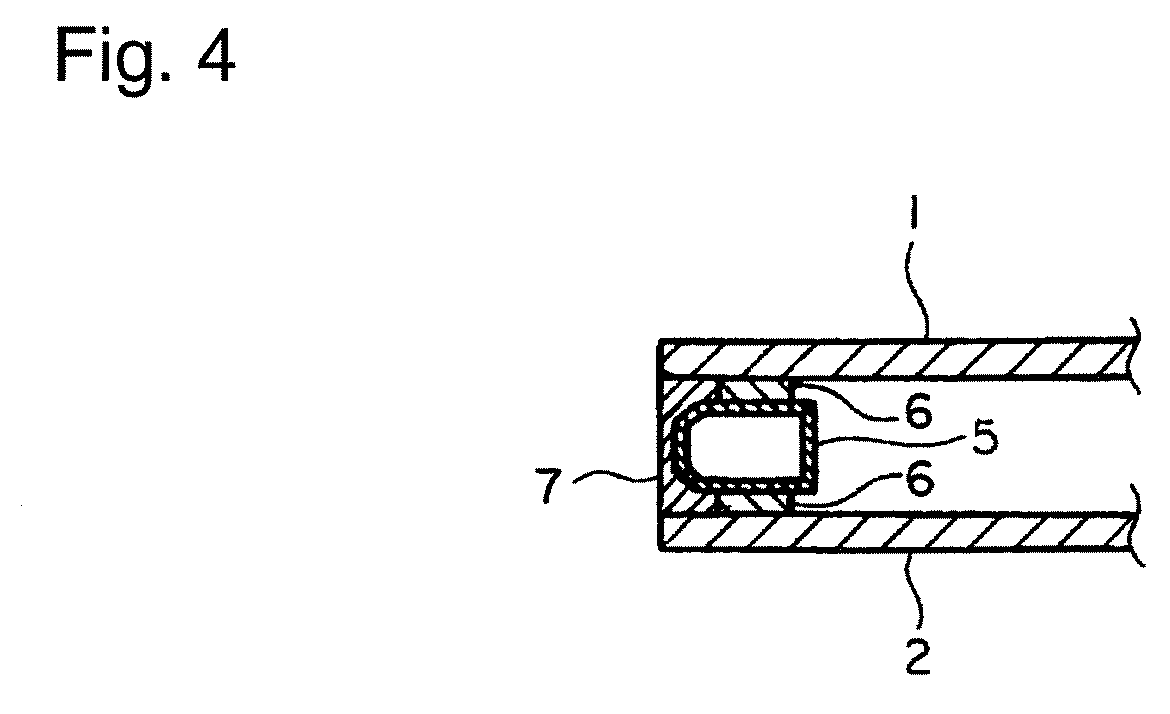Single-sealed multilayer transparent unit
a transparent unit and single-sealed technology, applied in the direction of doors/windows, layered products, chemistry apparatus and processes, etc., can solve the problems of insufficient heat-insulating properties, relatively expensive installation of the production, and the and achieve excellent shape retention ability, excellent durability, and low creeping property of the spacer material
- Summary
- Abstract
- Description
- Claims
- Application Information
AI Technical Summary
Benefits of technology
Problems solved by technology
Method used
Image
Examples
example 1
[0064] Materials selected from three types of polyisobutylene (Oppanol B12, Oppanol B100 and Oppanol B150, tradenames) manufactured by BASF as polyisobutylene, crystalline polyolefin (tradename: High Density Polyethylene KM870A) manufactured by Nippon Polyolefin, a tackifier (Escorez 228F, tradename, manufactured by Tonex Company Limited), LMS-300 (tradename), manufactured by Fuji Talc Industrial Co., Ltd. as inorganic filler, carbon black, SEAST 3 (tradename) manufactured by Tokai Carbon Co., Ltd. as coloring pigment, and Zeolite 4A powder manufactured by Asahi Glass Company Limited as a drying agent, were put into a 150 L pressure kneader in the proportions by mass % as indicated in Table 1 and in a total amount of 160 kg, followed by kneading for 30 minutes. The obtained composition was extruded by means of a rubber extruder manufactured by Toshin Co, Ltd. at an extruder barrel temperature of 90° C. at a die temperature of 120° C. to obtain an elastomer spacer containing a butyl ...
PUM
| Property | Measurement | Unit |
|---|---|---|
| Temperature | aaaaa | aaaaa |
| Percent by mass | aaaaa | aaaaa |
| Percent by mass | aaaaa | aaaaa |
Abstract
Description
Claims
Application Information
 Login to View More
Login to View More - R&D
- Intellectual Property
- Life Sciences
- Materials
- Tech Scout
- Unparalleled Data Quality
- Higher Quality Content
- 60% Fewer Hallucinations
Browse by: Latest US Patents, China's latest patents, Technical Efficacy Thesaurus, Application Domain, Technology Topic, Popular Technical Reports.
© 2025 PatSnap. All rights reserved.Legal|Privacy policy|Modern Slavery Act Transparency Statement|Sitemap|About US| Contact US: help@patsnap.com



